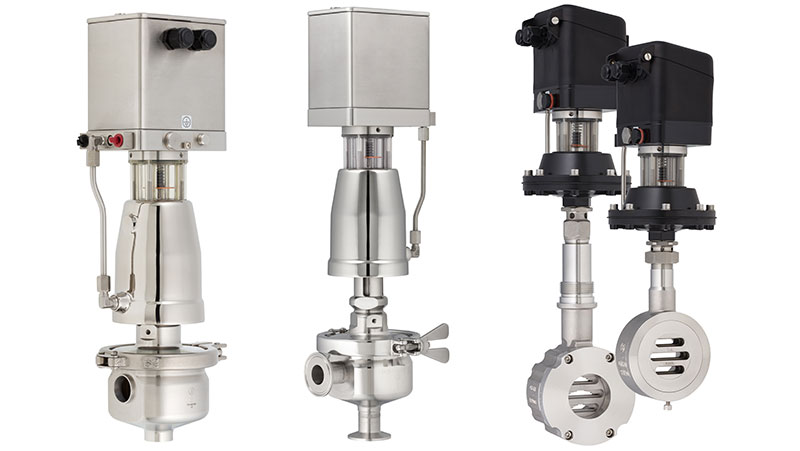Schubert & Salzer Control Systems present high-precision control valves and reliable shut off valves for numerous processes in the food and beverage industry. The EHEDG-certified 6051 aseptic right angle valve and the new 3A-compliant 6052 hygienic right angle valve. Both sanitary valves can be executed as a shut off or control valve. The new, particularly compact type 8028 sliding gate valve with diaphragm actuator will also be on view.
Besides new and further developments, Schubert & Salzer bring an important message:
“Even in the current situation, as a reliable partner to the industry we are guaranteeing supplies by implementing comprehensive measures,” explains the head of purchasing and logistics, Alwin Berger. This is because, long ago, the specialist for control and shut off valves opted to hold extensive, dynamically managed stocks and invested in stable supply chains. The result is a crisis-proof ability to supply and short delivery times.
Characteristic of the 6051 aseptic right angle valves and the new 6052 hygienic right angle valve, which is now 3A-compliant, is their outstanding ability to be cleaned for use in food manufacturing and in the beverage technology sector, e.g. in dairies. This enables, above all, an optimal flow behaviour and a valve body made of pore-free stainless steel bar stock material with minimal roughness. A PTFE-coated diaphragm separates the process chamber and the valve actuator and is also completely resistant to the high temperatures encountered in SIP or CIP processes.
The type 8028 sliding gate valve controls liquid, gaseous or vaporous media with high precision. It scores highly especially when used in confined spaces: At a nominal size of DN100, for instance, the installation height of the GS1, the most compact version, is only 487 millimetres.
The slide gate technology controls the flow rate in milliseconds, by two slotted discs arranged vertically to the direction of flow moving on top of each other in a linear manner. The actuator must therefore only overcome the sliding friction between both discs. That reduces the actuating force by 90 percent compared to globe valves with the same nominal size at the same differential pressure and is particularly low on wear.


